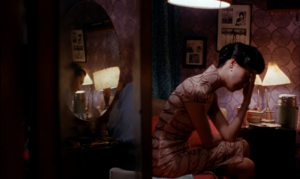This year has seen a run of Australian studios reaping the benefits of outside investment. In January, Brisbane’s Blacklight Interactive sold the rights to their hit title, Golf with Your Friends, for £12 million. Not long afterwards, Melbourne’s Big Ant Studios was acquired for €15 million (with a promised €20 million bonus, pending performance targets). April saw the public listing of South Australian mobile heavyweight Mighty Kingdom on the ASX, following Playside’s similarly successful public launch in 2020.
It should be obvious from these studios’ portfolios that some types of games are more likely to attract investment – namely, those with strong potential to retain players over longer periods of time, generating profits via in-game transactions (as per Mighty Kingdom titles), downloadable content (e.g. Golf with Your Friends) or a reliable stream of licensed sports titles (like those released by Big Ant). Still, investment in Australian game studios isn’t exactly novel – indeed, it entirely predates the popularisation of microtransaction- and downloadable-content-based business models. What’s notable about these recent examples is that the extent of investment funding has created the opportunity for each company to scale up.
While undeniably essential for the overall health of Australian game making scenes, the project-based funding model adopted by state screen-industry bodies doesn’t allow for studios to scale beyond a certain point. Other regulatory issues also play a role; for example, Victorian studios are hampered by their state’s comparatively low payroll-tax threshold. As a result, many studios have struggled to secure new hires without taking on unreasonable amounts of risk: survival is more important than growth.
In a presentation late last year, Kevin Chen of Route 59 emphasised the contingent nature of game development funding, drawing on his own experiences over the five-year production of 2020’s Necrobarista. Crucially, Chen was candid about the numerous ways that game revenue can be siphoned away from the studio itself as a consequence of decisions made during production: loans are repaid, publishers get their cut and employees profit directly via revenue-sharing agreements. While the gains that studios claim may be substantial – assuming the game is profitable at all – it is rare for these profits to spur the company’s growth out of the startup stage.
As my previous column observed, even studios with sufficient monetary resources face logistical and social difficulties in attracting and retaining employees from overseas. In April, Interactive Games & Entertainment Association representative Jens Schroeder spoke to a government committee on skilled migration, making the case to extend permanent visas to specialist game development roles, such as narrative design. Ironically, many of the senior Australian developers who could fill these positions have found work in other countries such as Canada, whose permanent visa provisions are more generous to games workers. It is telling that, at the time of writing, almost all of the job openings in established companies – Mighty Kingdom, PlaySide, Gameloft and League of Geeks, among others – are for mid-level or senior roles.
In short, Australian game development studio growth has been limited by government regulations on immigration and a general lack of private investment (recent examples notwithstanding). Given these conditions, companies such as those described above have begun to adopt different approaches to revenue generation in an effort to establish a sustainable future. Alongside the gradual re-establishment of satellite studios (such as Sledgehammer), these efforts arguably reflect a trend towards professionalisation, or perhaps industrialisation. The presence of larger companies has clear benefits for Australian game development more broadly – for example, Mighty Kingdom is one of a handful of companies that supports a regular graduate intake.
Of course, although larger teams create opportunities to make a wider variety of games, it is entirely reasonable that the Australian games ecosystem should support a wide range of studio sizes and structures. For many studios, scaling up simply isn’t a priority: Hipster Whale co-founder Matt Hall, for example, has spoken about his disinterest in growth for its own sake. It is also difficult to ignore that many of the most well-known Australian games in recent years – Florence, Untitled Goose Game, Shower with Your Dad Simulator and Frog Detective, among others – have been those made by smaller outfits. Local scenes clearly benefit from a variety of voices and approaches to game production.
Ultimately, the decision to scale up (or not) should not be primarily influenced by regulatory constraints that complicate hiring at the local and international level alike. The companies described at the beginning of this article that have reaped the benefits of private investment are somewhat unusual – for many Australian studios, growth is out of reach. By now, it should be clear that this is not for lack of talent or creative output, but due to a number of largely external, unrelated reasons pertaining to game monetisation, funding models and governance. The former issues are complicated: in-game transactions and downloadable content don’t mesh well with many game designs; and, as noted, project-based funding models play a key role in providing much-needed early support to newer studios. The most straightforward levers are governmental – and the federal government’s recently announced tax offset will certainly benefit the larger studios that qualify – but further changes to visa and tax rules are needed to support Australian studios at all stages of growth. Whether these changes will be made remains to be seen.





